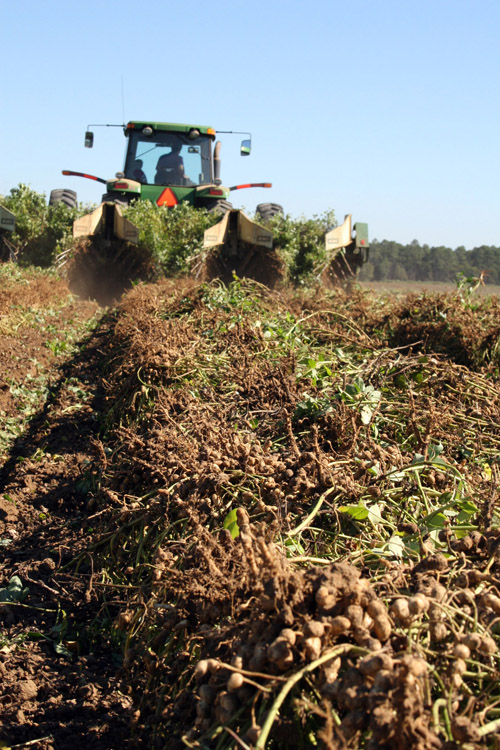Georgia row-crop farmers worked hard on their fields this growing season, and Mother Nature gave them some favorable “calls.” They could break records. This coupled with fair prices could lead them, if not to a conference championship, to at least what could be called a “winning” season.
Most Georgia farmers plant more than one crop during a season, usually managing a combination of peanuts, cotton, corn or soybeans. Across the board, they are looking at record or record-tying yields.
Farmers planted 1 million acres of cotton this year and expect to produce1.8 million bales. (A bale is 480 pounds of lint.) This is slightly less than earlier predictions, but still 200,000 bales better than last year, according to the Georgia Agricultural Statistics Service.
“Certainly the profit potential is there for cotton when you consider the size of the crop, which will be by most accounts phenomenal,” said Don Shurley, a cotton economist with the University of Georgia Cooperative Extension.
Right now, the state’s average yield is forecast to be 873 pounds per acre, or 24 pounds more than the previous record set in 2005. Harvest will not be complete until later this month or next.
Along with the yields, prices are also good at 70 cents per pound of lint right now. “And any price that starts with the number ‘7’ gets cotton farmers’ attention,” Shurley said.
Overall, U.S. and world production is down 5 percent this year. Demand for U.S. cotton has rebounded by 2.5 percent after a major slump last year, which has kept prices higher.
Georgia peanut yields are expected to be 3,500 pounds per acre, which would be 50 pounds more than the record set in 2003, according to GASS.
“If we do reach or exceed 3,500, it will be amazing, considering the delayed planting in spring and the very undesirable harvest conditions,” said John Beasley, a UGA Extension peanut agronomist.
The No. 1 reason, he said, Georgia may reach the record is the widespread use of improved peanut varieties, like Georgia-06 G, Florida-07 and Tifguard. These varieties have high levels of disease resistance and perform with good rainfall, which most of the state received after June.
Prices for this season’s peanuts are $400 per ton, or $50 to $100 less than last year. This decrease is due to 1 million tons in surplus that hung over preplanting decisions and contract offers farmers were receiving, said Nathan Smith, a UGA Extension economist.
Georgia peanut farmers, who produce half of the nation’s crop, responded to the surplus by planting 505,000 acres this year, or 185,000 acres less than last. The U.S. will produce 1.8 million tons this year, 300,000 tons less than the expected U.S. consumption. This will shrink the surplus which will be good for prices next year, Smith said.
Demand for peanuts has recovered from the salmonella scare associated with a Georgia processing facility earlier this year. It is on track to be up 2 percent from last year, Smith said.
Georgia’s average corn yield will be 140 bushels per acre, tying last year’s record. Timely rain and irrigation helped the crop. Prices are good, too, Smith said, around $3.85 to $4 per bushel. An increase in demand for ethanol, which is made from corn, has bolstered prices.
Soybean farmers will also tie a yield record this year, averaging 33 bushels per acre. Prices for soybeans are high at $10 per bushel. China’s demand for U.S. soybeans has fueled the high prices. They will import 614 million bushels this year, double what they imported last year.
Overall input costs, or what farmers spend to produce a crop, stayed the same or decreased 5 percent to 10 percent from the previous year, Smith said. This helps farmers’ bottom lines.
Georgia’s growing season results will vary from farm to farm and so will profits, he said. Some farmers spent more, for example, to control insects or diseases in certain locations.
“But overall, things do look better now compared to what we were forecasting earlier this year,” Smith said.








